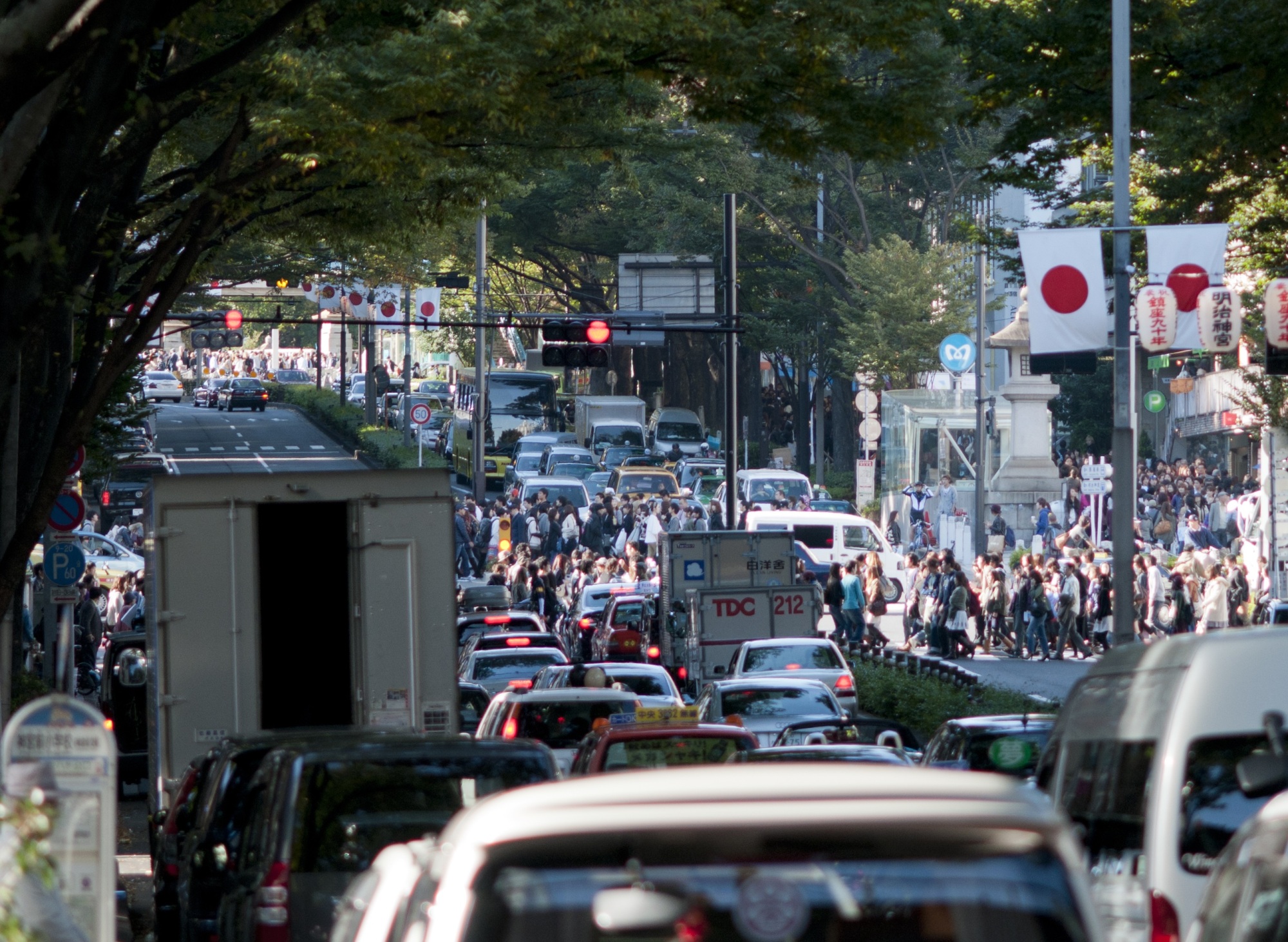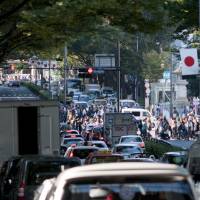The government began studying ways Thursday to curb traffic congestion during the 2020 Tokyo Olympics and Paralympics, including promoting staggered work hours and teleworking.
At its first meeting to promote the smooth flow of traffic during the international sporting event, participants including games organizing committee members and Tokyo Metropolitan Government officials formulated plans to limit the volume of general traffic around event venues.
They resolved to test the measures in the summer of 2018 and 2019 and evaluate the outcome before the opening of the Tokyo Olympics.
To drastically reduce traffic volume, the government will consider seeking the cooperation of companies around the venues and recommending people vary their commuting hours, work at home, and take summer vacations during the event.
The government may also ask drivers to take detours to avoid areas that tend to become congested.
Some 8 million people, including spectators and Summer Games personnel, are expected to move around the area during the Olympics, and 2.4 million people during the Paralympics.
Some people are concerned a wide area of central Tokyo could become congested because the locations of the athletes' village, competition venues and press center are dispersed.
"We will make the Games successful without stagnating economic activities and obstructing citizens' lives," said Tamayo Marukawa, minister in charge of the Tokyo Olympic and Paralympic Games.
Meeting participants included members of Keidanren, a business lobby representing Japan's largest companies, and people associated with the railroad and taxi industries.




